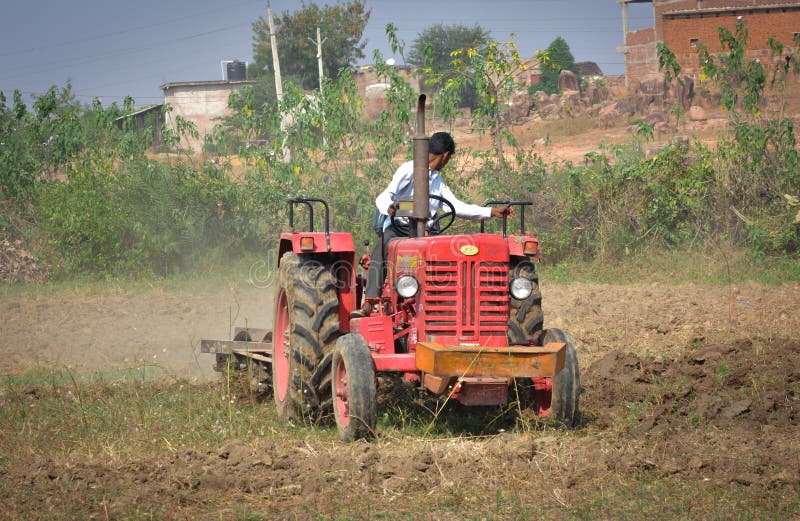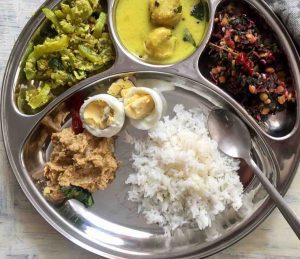The TREND study by a Chennai-based research foundation reveals an alarming increase of diabetes in rural TN, but a reduction in pre-diabetes rates.

Representative picture of diabetes being checked in rural areas. (Wikimedia Commons)
A new study conducted by the Telemedicine PRoject for screENing Diabetes and its complications in rural Tamil Nadu (TREND) has found that the prevalence of diabetes among adults in rural Tamil Nadu has increased significantly over the last 11 years.
The study “Secular trends in the prevalence of diabetes and pre-diabetes among the rural population of South India”, published in the International Journal of Diabetes in Developing Countries, also found that there was a significant increase in the prevalence of both self-reported diabetes (3.8 to 9.7 percent) and newly-diagnosed diabetes (1.5 to 4 percent).
However, there was a decrease in the prevalence of pre-diabetes from 16.7 to 8.4 percent — a 49.7 percent decrease — during the 11-year period.
South First spoke to India’s leading diabetologist Dr V Mohan, who is the lead researcher of the study, as well as a member of the advisory committee for diabetes of both the Tamil Nadu government and the Government of India. He is also the chairman of Dr Mohan’s Diabetes Specialties Centre and Madras Research Foundation.
He stated that though many studies have reported on the prevalence of diabetes in urban and rural India, this study is unique and involved a significant effort.
It was a considerable task to revisit the same village after a decade, make observations, and compare them. Such a distinctive study has not been carried out in many locations in India, noted Dr Mohan.
“The secular trends in the prevalence of diabetes and pre-diabetes in rural South Indian population based on two cross-sectional studies done 11 years apart — in 2010 and 2021 — in the same geographical area and similar villages was definitely challenging. The findings are alarming and need immediate interventions,” he noted.
Two surveys were conducted in a cluster of 42 villages in the Cheyyur taluk of Kancheepuram district, Tamil Nadu, to study the prevalence of diabetes and pre-diabetes. The first study, the Chunampet Rural Diabetes Prevention Project (CRDPP), was conducted between 2006 and 2010, and the second study, TREND, was conducted between 2018 and 2021.
Dr Mohan explained that the study areas, methodologies, and selection criteria were similar in both studies, “despite the fact that there were a lot of changes in the demography of these places. And then, of course, the people are 10 years older — that is something that we did take into account”, he said.
The CRDPP study included adults aged above 20 years, while the TREND study included adults aged above 18 years. However, a sensitivity analysis showed that the prevalence of diabetes did not differ significantly between the two age criteria.
Both studies used a standardised questionnaire to collect details on demography, dietary habits, medical history, tobacco use, and alcohol consumption.
Dr Mohan said that age, sex, Body Mass Index, formal education, occupations other than agriculture, family history of diabetes, and systolic blood pressure were significant predictors of diabetes.
As against the belief that diabetes is a lifestyle and very urban-dwellers’ disease, the rural population is quickly catching up, said Dr Mohan.

Modernisation has resulted in a sedentary lifestyle. (Creative Commons)
He added that with job opportunities in other countries and a change in occupation — non-agriculture jobs — also came an increase in income. Those who would once walk for kilometres to work in the field, have now begun to use motorised transport, trucks to plow the field and so on, leading to a sedentary lifestyle.
This reduced physical activity and the availability of technology has led to a lack of exercise. This coupled with poor eating habits has increased the risk of diabetes.
“This is one of the factors in which the diabetes percentage, which was quite low when compared to urban population, is now catching up quickly. Our multiple studies have shown that diabetes in rural Tamil Nadu is continuing to increase,” Dr Mohan added.
Another reason for an increase is the fact that rural parts of South India still rely on traditional beliefs and practices that do not always promote healthy lifestyles. The lack of knowledge about diabetes prevention, symptoms, and management is widespread, and this leads to people not recognising the early warning signs of diabetes.
In rural Tamil Nadu, people’s eating habits have changed significantly over the years. The traditional healthy diet, which comprised of fresh vegetables, fruits, and whole grains, has been replaced with unhealthy processed foods, fast food, and sugar-laden beverages.
The easy availability and low cost of these foods have made them the go-to option for many people in rural areas, leading to an increase in obesity, which is a significant risk factor for diabetes.

Rice has a high glycaemic index. (Creative Commons)
In Northwest Tamil Nadu, another study conducted in 2016 identified the main factors leading to an increase in diabetes prevalence, including the availability of sugar-laden sodas and sweets, as well as trans-fat-laced chips and bakery goods.
However, more significantly, the study found that the availability of free polished rice at ration shops through the public distribution system (PDS) has made it the region’s staple food.
During the study, they had observed a similar shift to rice as the staple, which is a trend seen throughout South India. The high consumption of white rice, which has a high glycaemic index, could be a contributing factor to the region’s higher rate of diabetes compared to North India.
“The local belief is that one is not full until they have had a rice meal, making it a popular option among farm labourers who require a heavy meal that lasts throughout the day. While seasonal vegetables are affordable, most plates are filled with rice, and a rice meal is filling and cheap,” explained Dr Mohan.
The lack of trained healthcare professionals and insufficient resources at rural health centres also pose a significant challenge to diabetes management in rural areas.
“Screening programmes are critical in identifying people with diabetes early and providing them with appropriate treatment and management. However, in many rural areas, diabetes screening programmes are either non-existent or limited, leading to many cases going undetected until they become severe,” doctors said.
Interestingly, while the study results showed that the diabetes had increased by 158 percent, pre-diabetes had dropped by almost 50 percent. The decrease of prevalence of pre-diabetes from 16.7 percent to 8.4 percent during the 11-year period, according to researchers, suggest a future slowing down of the epidemic.
Many other studies that Dr Mohan’s Foundation has published have shown that the conversion rate of pre-diabetes to diabetes is one of the fastest in India. “In earlier studies, we have even gone back to the same individuals and found that the rate of conversion from pre-diabetes to diabetes is very high,” he said.
Dr Mohan noted that if the pre-diabetes had remained high, then in another 10 years, it would have doubled by another 158 percent.
Dr Mohan explained that the study showed that rural areas are fast catching up, the conversion of diabetes is already occurring in states like Tamil Nadu and southern states where the socio-economic status is rapidly changing.
There is still scope for prevention — those who are in the pre-diabetic stage at least they can take steps to prevent diabetes. Those who are diabetic, can control the condition by making lifestyle changes. Remission can happen too if they are in the early stages, advised Dr Mohan.
Being part of the government advisory board on diabetes, Dr Mohan said that there is a need for creating awareness among people on what to eat.

A balanced meal with carbs, proteins, and fat essential for diabetes reversal and management. (Supplied)
“They need to be told to eat non-starchy vegetables and cut down on rice, eat more dals, legumes, pulses, and protein. Increasing proteins by 10 percent and decreasing carbs by 10 percent is more than enough for one to achieve remission of diabetes,” explained Dr Mohan.
He said that the concept of rice-rasam, rice-sambar, rice-curd, etc should change and families need to adapt to the thali concept.
Half the plate should be green leafy vegetables, the quarter plate should be reserved for proteins — fish, chicken, egg (for non-vegetarians) and Bengal gram, green gram, rajma, mushroom (for vegetarians).
“Here also, they must eat very small quantities of rice, like one chapathi, one carb etc. This will reduce carb intake and increase your vitamin levels. Along with physical exercise, this will reduce belly fat,” Dr Mohan added.
Dr Mohan said that it is important for governments to send out this message on diet and also make fruits and vegetables affordable. He added that they are also looking into suggesting millets — instead of rice — to be given to the public.
Dr Mohan said that his foundation is working with the government, MS Swaminathan Research Foundation (MSSRF), and several others to see whether they can introduce millets in the PDS system itself instead of rice.
The Tamil Nadu government, according to Dr Mohan, is trying to implement this scheme as a pilot in some of these villages. There have been preliminary discussions on this, but nothing has started yet, he added.
Appreciating the study, noted diabetologist Dr Manohar KN said, “Type 2 diabetes, traditionally, has been thought of as a disease of older age and those from the urban set-up. These comparative studies suggest that the rural urban divide is no longer a significant factor.”
Regarding the reduction in trend of pre-diabetes, Dr Manohar said, “Even though this is a heartening news, possibly reflecting the impact of awareness of diabetes, it would be prudent to re-confirm this finding in a larger multi-centric study.”
He added that he believes in lifestyle diseases requiring lifestyle solution and our emphasis should be about prevention of diabetes.

May 03, 2024

May 01, 2024

May 01, 2024

May 01, 2024

May 01, 2024

May 01, 2024